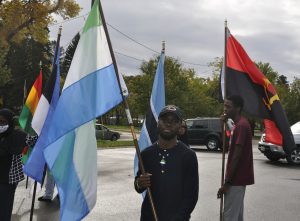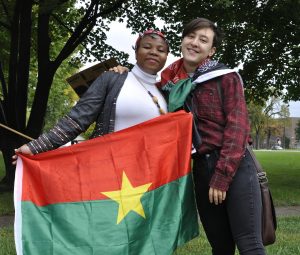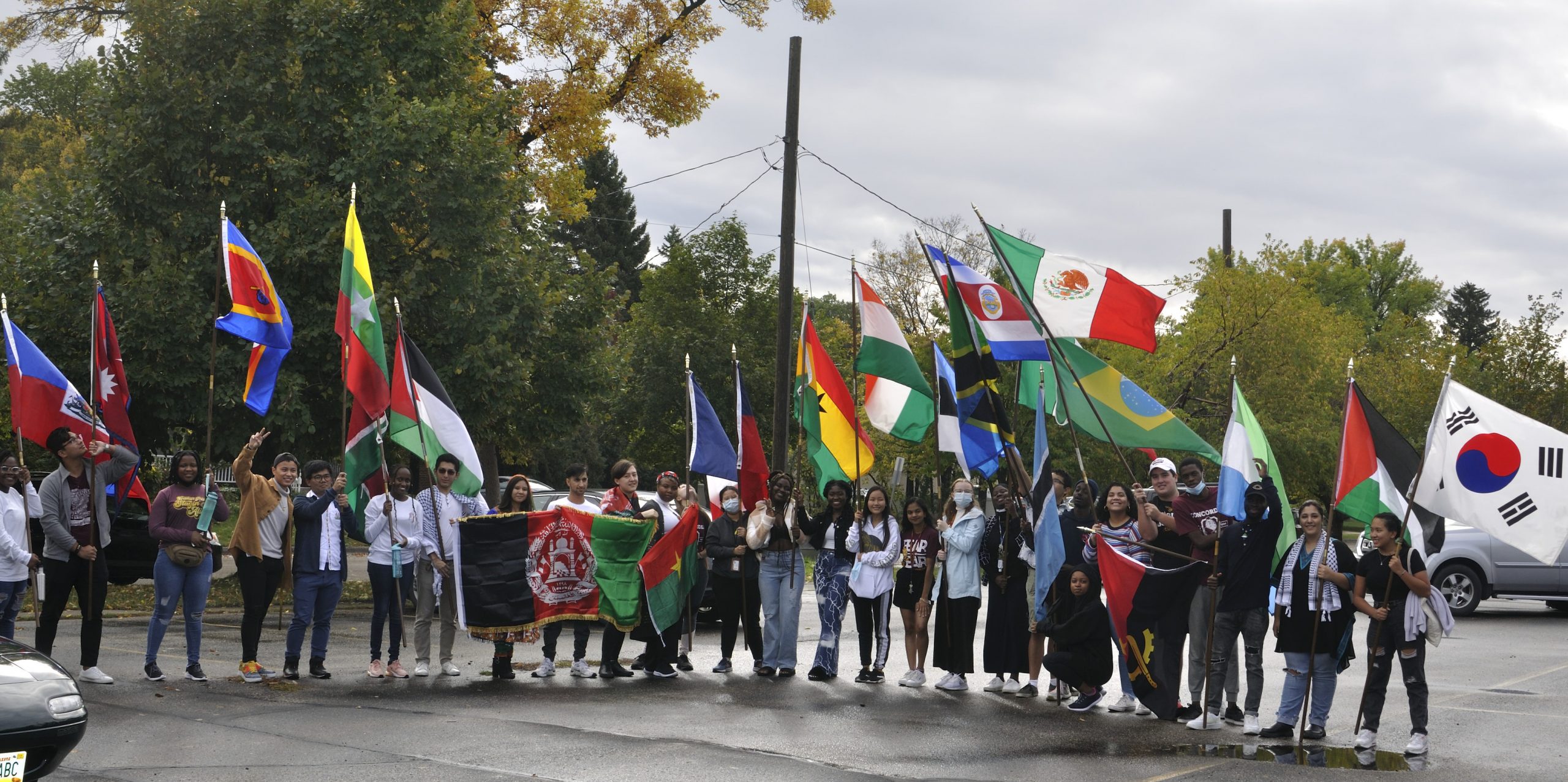That red, white and blue star-spangled banner. A white flag with a big red circle. The red, white and blue Union Jack. Flags are often an instantly recognizable symbol of a country.
The International Student Organization marched in Concordia College’s homecoming parade with a colorful display of flags and national pride. Every year, these students from around the world come together to participate in this tradition.

But what is in a flag? Why do these students wake up at 9:15 a.m. on the Saturday of homecoming weekend to march around for an hour?
For many, their flag is who they are.
Bliss Zou, the leader of the ISO, said the Indian flag “represents her identity.” India’s first vice president, Sarvepalli Radhakrishnan, said the saffron color at the top symbolizes the disinterestedness of its leader, the white in the center symbolizes the truth that will guide them and the green symbolizes a relationship to nature. The 24-spoke wheel in the center of the flag is the wheel of dharma, or law. With all it is, the Indian flag represents moving forward.
Amir Hossieni representing the Islamic Republic of Afghanistan in the parade also said his flag is his identity. Although his country has gone through more than 20 flags since the beginning of the 20th century, the tricolor black, red and green remains constant in nearly all iterations.

Mariana Martins Carvalho marching for Brazil said, “My flag represents the strength and identity of my people.” This flag was adopted four days after her country staged a coup and established its own government to replace the colonial government of the Portuguese. Martins Carvalho’s flag features the saying “Ordem e Progresso,” meaning “Order and Progress” in Portuguese. Surrounding this saying is a blue circle with stars that depicts the sky above Rio de Janeiro, Brazil; there is one star per Brazilian state, plus one for the federal district.

Across the Atlantic, many African nations also have flags that call back to their struggle for independence from colonial powers. British colonies had flags with the Union Jack in the top left corner. After gaining independence, many of these colonies redesigned their flags to also break themselves symbolically from colonial rule.
“The flag means everything about Sierra Leone. It shows the vegetation, the peace and the Atlantic Ocean,” said Daniel Monya Pambu about his nation’s flag. “It’s who we are. It’s part of our culture.”
Rabiah Guira representing Burkina Faso said, “The red represents the blood of people who suffered for the country, the star represents all the gold and riches of the country, and the green represents the vegetation and forests.”

Amir Hossieni, Islamic Republic of Afghanistan. | David Lindgren
Ashley Chepkorir representing Kenya said her flag is about “unity: the blood that was shed during the fight for independence and the green nature of Kenya. All of them together, for unity.” Her flag has a shield and two crossed spears in the center that symbolize that unity. The colors of the flag also closely resemble the Pan-African colors, which are meant to unite African people across the continent.
Shields are not only seen on the Kenyan flag. Hailing from Eswatini, Royce Nhantumbo said her flag is, “a sign of pride and a sign of protection because of the shield.”
While many flags pay respect to a country’s past conflicts, for Maya Tannous of Palestine, her flag is a symbol of hope during an ongoing struggle. “My flag represents my identity and my country because my country is under occupation,” said Tannous. “There is still a Palestine, and we’re holding until the end.” The colors featured on her flag are the Pan-Arab colors that pay respect to specific historical Arab dynasties.

